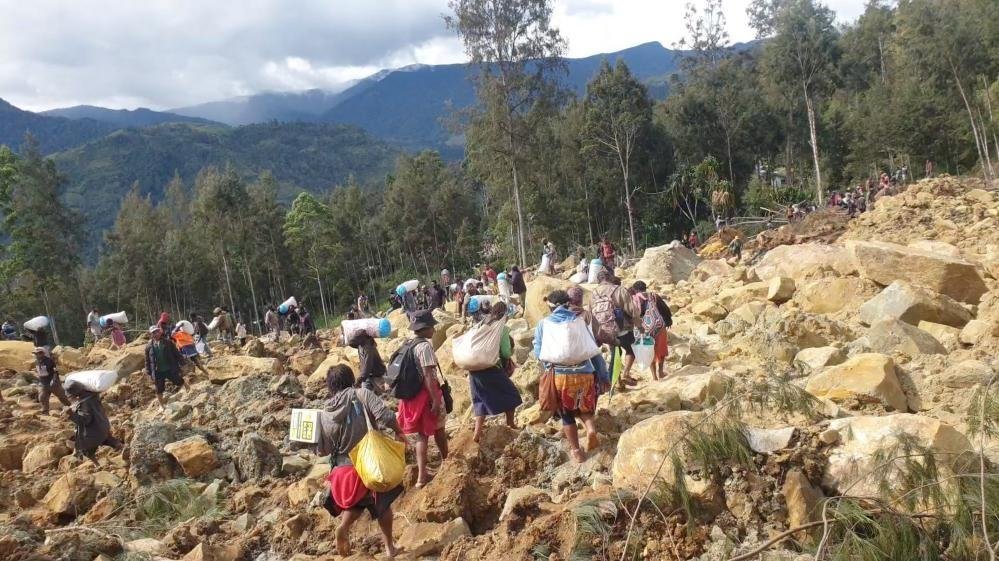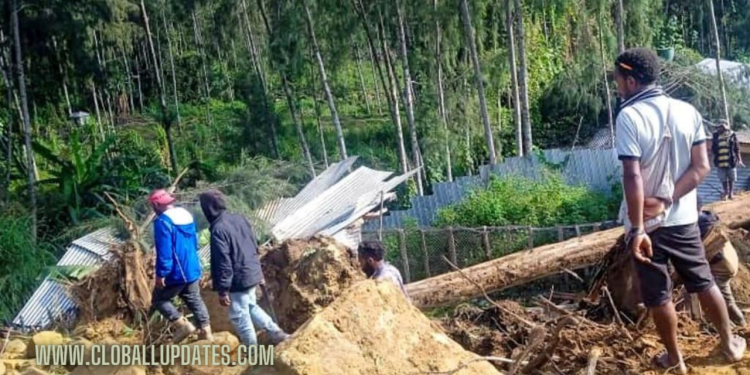The Catastrophic Event
In the early hours of a seemingly ordinary Friday, catastrophe struck the remote highlands of Enga Province in Papua New Guinea. A massive landslide, triggered by natural causes yet to be fully understood, descended upon the villagers with ruthless precision. The disaster occurred around 03:00 local time, burying hundreds of homes and leaving a scar on the landscape visible even from aerial views.
Immediate Response and Rescue Efforts
As news of the disaster broke, emergency services, including local military and medical teams, were quick to respond. Their journey, however, was anything but straightforward. The rugged terrain, compounded by the extensive damage to main roads, turned what should have been a rescue mission into a perilous trek. Helicopters became the only lifeline to the outside world, airlifting the injured and delivering essential supplies.
Challenges on the Ground
According to UN official Serhan Aktoprak in statements to the AFP news agency, the unstable land posed severe risks to rescuers. “The land continues to slide and move, which makes it extremely dangerous for our teams on the ground,” he remarked. Despite these dangers, footage emerged of local residents and rescuers navigating the wreckage, pulling bodies and survivors from beneath the rubble.
The Human Cost
Amos Akem, a local Member of Parliament, provided a grim tally: more than 300 people presumed dead and over 1,182 houses destroyed. The village of Yambali, just 50km from the provincial capital of Wabag, bore the brunt of the landslide’s wrath. The scale of destruction, as described by the survivors and rescue teams, paints a picture of complete devastation—homes obliterated, and landscapes transformed into graveyards of mud and debris.
National and International Aid Mobilizes
As the international community watches, aid has begun to pour in. Care Australia, along with the Papua New Guinea Red Cross Society, has been at the forefront, coordinating relief efforts. Their primary concern, as stated in a press release, is the potentially high death toll relative to the area’s population density. Global agencies, including the UN’s International Organization for Migration, have also pledged support and resources, focusing on the immediate needs of the displaced and bereaved.

Reconstruction and Future Preparedness
Speaking to the necessity of recovery and rebuilding, Papua New Guinea’s Prime Minister James Marape has committed to not only immediate relief efforts but also long-term reconstruction of infrastructure. “We are working closely with local officials to ensure effective relief work, body recovery, and infrastructure reconstruction,” he stated in a press conference.
Reflection and Action
The Enga landslide serves as a painful reminder of the vulnerability of human settlements to natural disasters, particularly in regions with complex geographical and environmental challenges. It also highlights the spirit of resilience and community that emerges in times of crisis.
How You Can Help
For those looking to aid the victims of this tragedy, contributions to established humanitarian aid organizations are critical. These funds go directly towards rescue operations, medical aid, and the rebuilding of the communities affected. Every donation, no matter the size, contributes to a larger effort to restore normalcy and safety to the lives of those impacted.
This disaster in Enga is a stark wake-up call to the global community about the increasing frequency and intensity of natural disasters, possibly linked to climate change and environmental degradation. As we report on this event and witness the responses, it’s a moment to reflect on how we, as a global society, can better prepare for and respond to natural calamities.














































